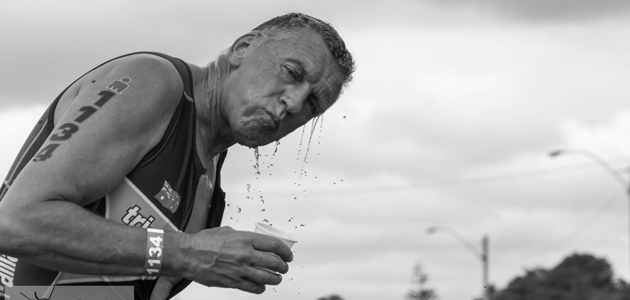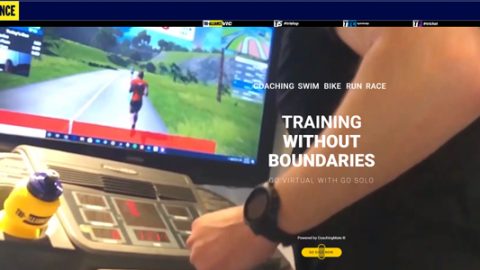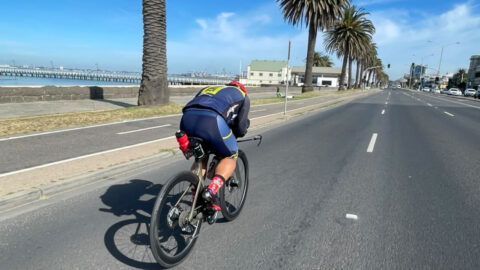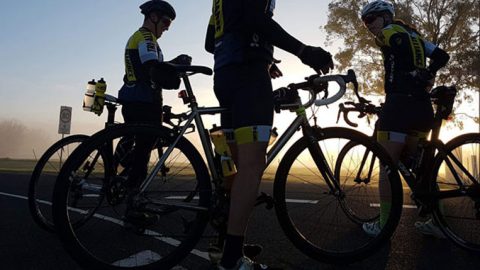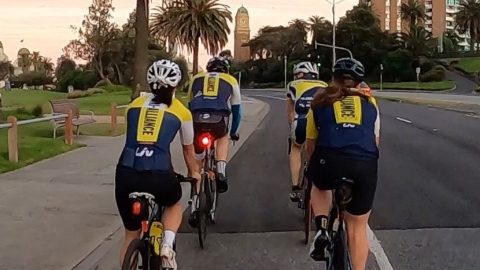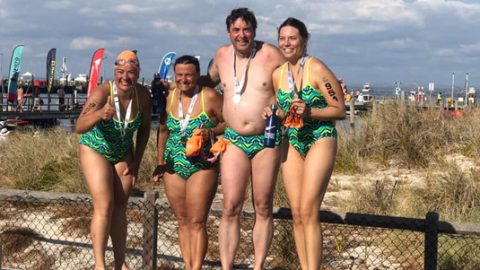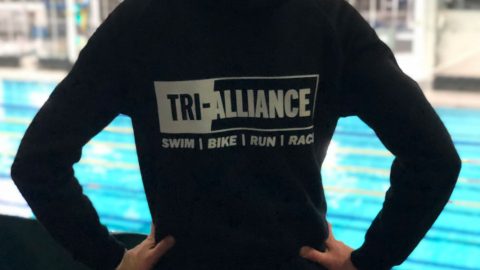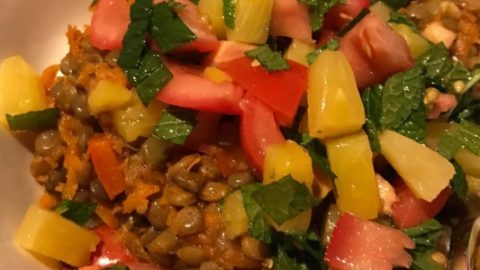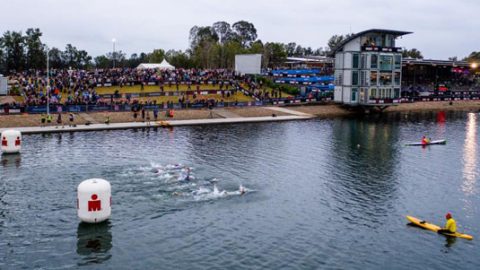Do Ants have Muscles?
~ Gary Rosengarten ~
Ok… I’ve got your attention now, ‘cause if I told you this article was “another” article about nutrition you’d probably give it a wide berth.
Well, when I say this is about nutrition in long course triathlon, I intend it to be a discussion, not a series of recommendations. I bet you’ve all read stuff about nutrition, and if you’re like me, you just end up more confused than when you started. Yet it’s probably the most important part of doing one of these events. You see, if you get it wrong you’re in big trouble no matter what your aims for that event may be.
It’s easy to quantify the swim, bike and run segments of a triathlon, and therefore we can be very specific about what our training loads for those distances need to be. But when we talk about nutrition, it all becomes vague generalizations, we can be given some broad recommendations and then told “but you need to see how it works for you and make sure you practice it when you train”!
I recently read an article about this, titled, “Less is Best” and it opened my eyes a bit to all this, and I thought it made sense. When I read something that makes sense and is logical I reckon there’s a good chance it’s on the mark.
This article focuses on the mistake many of us make when we do events like these, and that is, we try to take in too much in the way of calories, fluid and electrolytes. The argument they put forward is that the human body has limits to what it can assimilate via the gastro-intestinal tract, and that exceeding those limits is not only pointless, but actually detrimental to your health and performance. Bear in mind, when you are competing in an event your body will go into fight or flight mode and will divert resources away from the gut in preference to the skeletal muscles and vital organs. What this means is that your ability to assimilate calories and fluid has got even worse!
“Endurance exercise beyond 1-2 hours is a deficit spending entity, with return or replenishment always in arrears. The endurance exercise outcome is to postpone fatigue, not to replace all fuel, fluids, and electrolytes lost during an event. It can’t be done”!
The article goes on to say, “There is a tremendous difference between what is lost and what can effectively be replenished during exercise; for calories, 17-28% of what is burned can be replenished. For fluids, 20-33% and Sodium 20-35% can be replaced. Calorie oxidation rate and gastric absorption rate allow for no more than 240-280 calories per hour, at the most, to be consumed for successful gastric absorption to energy transfer. Consuming greater than that amount increases the potential for a number of stomach/digestive distress issues.”
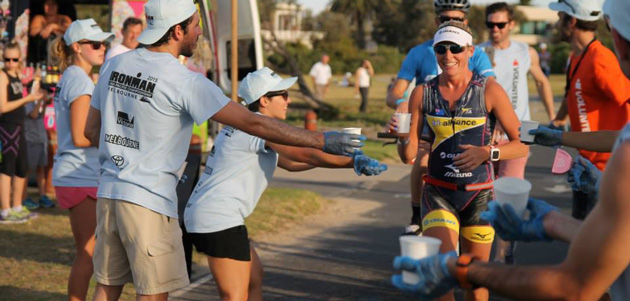
Are you interested now?
So, what this is saying is that you can only replace roughly 1/3 of what you lose in the way of calories, fluid and electrolyte during an endurance event, and that if you try to consume more, that’s when you can run into gut issues. If you err on the not-enough side it’s an easier problem to fix than an over-supply. So how come we manage to finish these events? I hear you all asking!
Well the simple explanation is the human body is great at adapting and it will use other resources to keep it going and make up the deficit. It will convert fat and protein into carbohydrate to fuel muscles, and it will conserve fluid via kidney function! Speaking of which, did you know that drugs like Panadol and Nurofen affect Kidney function, and can have a big impact on your hydration status!! Think of that next time you consider using them in an event!!
Anyway the article goes on to make some recommendations;
This is based on an average sized male athlete at about 72-75kg and I’ll put this in a table under the headings of: What you lose (upper limits), What you can actually absorb and then what the article recommends: This is all in a per hour basis.
Nutrition Loss What you can absorb Recommended intake
Fluids 1-3 Litre 500-830ml 470-830ml
Sodium 2000mg 500-700mg 100-600mg
Calories 700-900 240-280 120-150
Right, so where do we go now?
Well firstly let’s check the on-course nutrition available at the Australian and New Zealand Ironman events. At Cairns, Port Macquarie and Busselton they have Endura (has calories) as an electrolyte drink and Winners gels. At Taupo they have NUUN electrolyte (virtually no calories) and Cliff gels.
1 Winners gel has 117cal and 36mg of Sodium
1 Cliff gel has 100cal and 90mg of Sodium
Endura requires 2 scoops per 700ml
This gives 700ml of fluid, 352mg Sodium, and 174 cal
NUUN would require one and one half tablets per 750ml bottle which would give it 440mg Sodium (and 37mg magnesium and 15 calories)
So if you consume 2 Cliff gels and 1 bottle of NUUN electrolyte in an hour you have taken in: 220cal, 750ml of fluid, and 620mg of Sodium. According to the article you’re at, or above their recommended levels!
If you consume 1 bottle of Endura in an hour you’ve taken in 700ml fluid, 352mg Sodium and 174cal without even having one gel!! You’ve also taken in 326mg of magnesium. Same again, close to those recommendations.
Fascinating eh!!!
Now I’m not saying we should all follow this to the letter, but it’s a different way of looking at this issue, and I think it’s worth giving consideration. If you’ve been successful with what you’ve done before, then stick with it! If not, or if you think there is room for improvement then maybe consider this in your planning.
I’ll throw something else at you.
As far as taking on hydration your body absorbs it better if it’s isotonic. So by having electrolytes in your water helps its absorption and obviously supplies electrolytes at the same time. This is why I think the on-course nutrition at Taupo (NZ) is a better way to go about it, and allows scope for variation in your nutrition plan. If you’re taking Endura you’re pretty much committed to that alone unless you start alternating it with water and electrolytes separately, and the odd gel.
I told you it is confusing!
(As a side note – perhaps one reason why so many of us have problems with Endura is that we top it up with gels and bars, and if we accept the parameters we have discussed above, then this is far too much! Hello stomach problems!)
Ok enough of all that, before I go I want to talk about another subject that makes me grumpy.
CRAMPS! What annoys me about this is that many of us are looking for a magic bullet to fix them and prevent them. In many cases it seems Magnesium gets a big run in this regard.
When you look up cramps and what causes them, the first thing you’ll find is that in many cases we don’t know. Secondly, the first listed cause in most articles I’ve seen is dehydration. Low Magnesium is usually well down the list if mentioned at all. Fatigue gets a mention but what does that mean? Possibly that waste products are building up, nutrients are being depleted and blood flow and oxygen supply is not keeping up with all this. So there is probably a shift to anaerobic metabolism and an increase in the formation of Lactic Acid.
(By the way, if we are producing Lactic Acid, are we therefore Lactating?) But I Digress!
Let’s look at this logically and perhaps a bit laterally (like we have with nutrition). I’ll ask you a couple of questions.
1) When does cramp happen? At the start of an event or nearer the end of it?
Well mostly it happens when you (and your muscles) are fatigued.
2) What do muscles (and nerves) need for proper function?
The answer here is “everything”!
They need; Oxygen, Water, Carbohydrate, Calcium, Potassium, Sodium, and Magnesium (plus other trace elements). They also need Vitamins (B1, B5, B6 are mentioned), and good blood flow. So when a muscle is fatigued it’s probably running low on all these things! But let’s take Magnesium that should fix it!
There are also factors which make cramps more likely such as medications (Diuretics, The Pill, Statins, and Steroids).
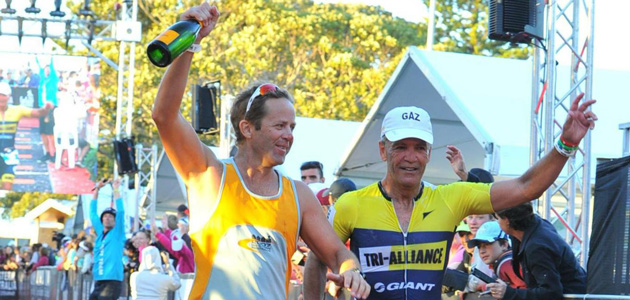
Finally, there’s no point writing something like this unless I ruffle a few feathers, which I probably already have anyway. If we believe what the people in the article are telling us, and they back up their claims with a solid block of research, then what is the point of knowing how much we lose in the way of Water, Sodium and Calories if we can only put back about a third of it regardless! If we can only assimilate up to 830 ml of water per hour what is the point of drinking 1.5 litres!
Do you see my point! I’m open to argument here and I’m sure I’ll get plenty (already have from one of our prominent and top athletes 🙂
Finally (I mean it this time)….So DO ants have muscles?
Well, I’ve run out of time, so we’ll discuss that in my next article 🙂
Gaz

